Demoh
Member
- 217
- 26
- 18
- Location
- St Pete, FL
About 20 hrs this weekend working on the MEPs we have. Sat was 46 and for some reason for me its perfect ice cream weather so I enjoyed some ice cream with a MEP in the background.
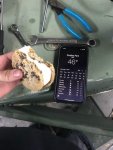
Some other highlights included unsticking 2 fuel racks in 2 different gens. Each gen had a seized pump so those were replaced. Fuel rack stops werent set correctly on the 813 (this one I am using as a donor for an 803 needing an engine) so had to adjust that and of course had to replace all the lines. The goal was to get the 813 running prior to pulling because it would really suck to install an engine with problems.
Needed to pull the tank and radiator and in doing so I discovered something which confuses me. So I removed the fuel tank, ok no problem. I started the generator up, no problem. Wait what? Every sensor for the fuel tank is disconnected but yet the generator runs without fault and with battle short off. Picture 3 and 4 is exactly how I ran the generator and it ran find without issue and the confuses me. Logically you would thing that if sensors are disconnected that it would have a fault and shut down. I guess this is kind of like the oil pressure switch where if you disconnect it the unit will never know if you have low oil pressure and continue to run even with 0 psi. This is all moot though because I wont be using any of these electronics as Ill be pulling the engine. I am curious if anybody has had the same experience where disconnecting the fuel float and sender allows the unit to run without error display, or does it sound like this unit's electrical has either been tampered with or has an issue.
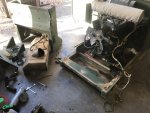
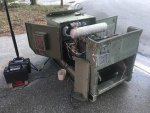
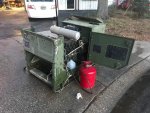
And now for the fun. so I replaced a pump and tested the other 3 that werent seized up. Reinstalling and aligning the pumps was interesting. Im not done with this unit but I wanted to get the pumps close enough before the pull to give me a good foundation afterwards, and I'm a sucker for tech also so I decided to align the pumps with a thermal imager. The thermal imager was enough to get the cylinders close enough for this weekend's goals. Does anybody use any other methods for adjusting these pumps or is doing it by temperature fine?
I didnt take an after picture with the manifold temps being really close but I included the before picture.
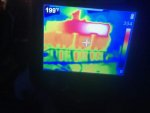

Some other highlights included unsticking 2 fuel racks in 2 different gens. Each gen had a seized pump so those were replaced. Fuel rack stops werent set correctly on the 813 (this one I am using as a donor for an 803 needing an engine) so had to adjust that and of course had to replace all the lines. The goal was to get the 813 running prior to pulling because it would really suck to install an engine with problems.
Needed to pull the tank and radiator and in doing so I discovered something which confuses me. So I removed the fuel tank, ok no problem. I started the generator up, no problem. Wait what? Every sensor for the fuel tank is disconnected but yet the generator runs without fault and with battle short off. Picture 3 and 4 is exactly how I ran the generator and it ran find without issue and the confuses me. Logically you would thing that if sensors are disconnected that it would have a fault and shut down. I guess this is kind of like the oil pressure switch where if you disconnect it the unit will never know if you have low oil pressure and continue to run even with 0 psi. This is all moot though because I wont be using any of these electronics as Ill be pulling the engine. I am curious if anybody has had the same experience where disconnecting the fuel float and sender allows the unit to run without error display, or does it sound like this unit's electrical has either been tampered with or has an issue.



And now for the fun. so I replaced a pump and tested the other 3 that werent seized up. Reinstalling and aligning the pumps was interesting. Im not done with this unit but I wanted to get the pumps close enough before the pull to give me a good foundation afterwards, and I'm a sucker for tech also so I decided to align the pumps with a thermal imager. The thermal imager was enough to get the cylinders close enough for this weekend's goals. Does anybody use any other methods for adjusting these pumps or is doing it by temperature fine?
I didnt take an after picture with the manifold temps being really close but I included the before picture.




